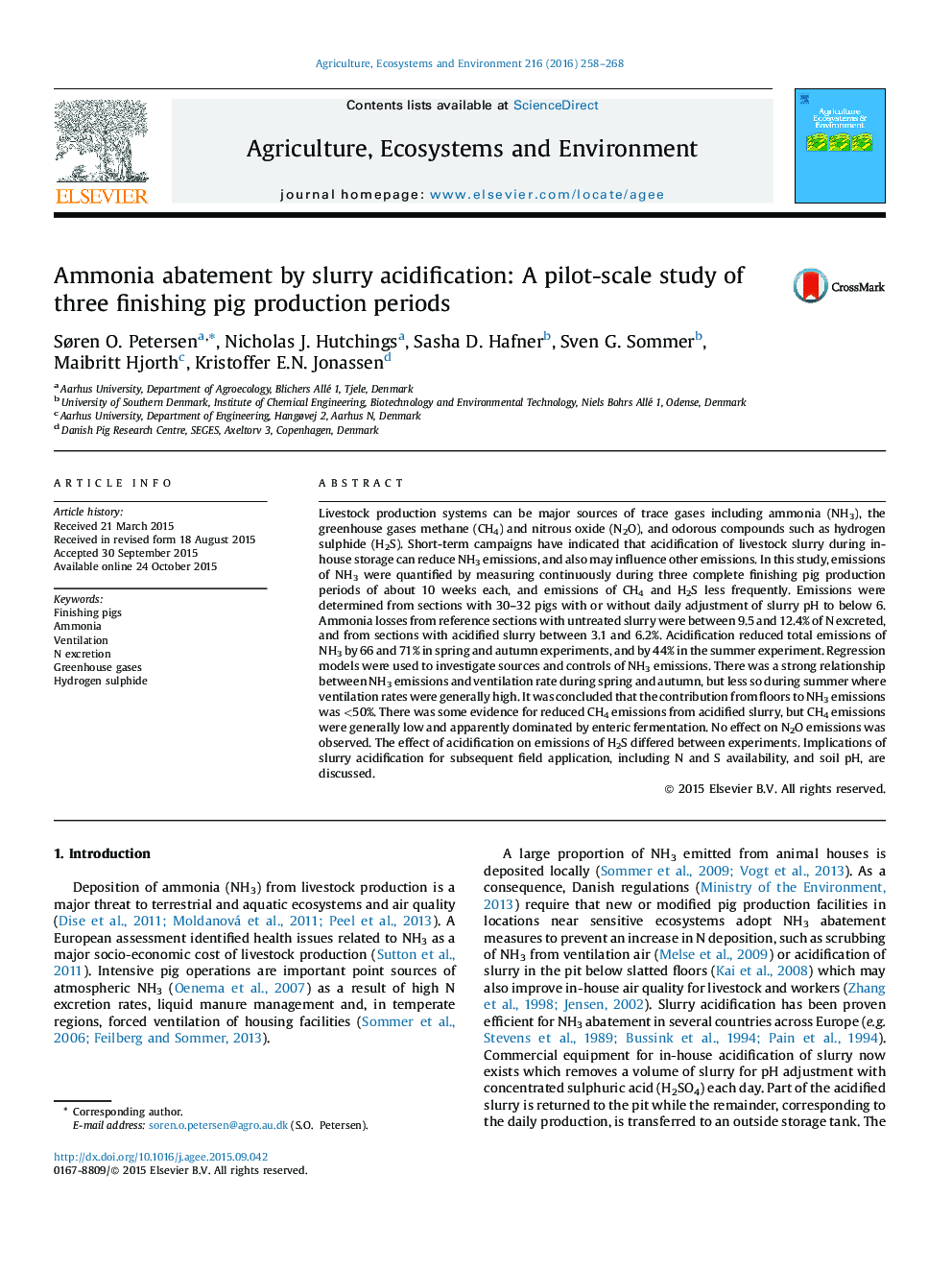| کد مقاله | کد نشریه | سال انتشار | مقاله انگلیسی | نسخه تمام متن |
|---|---|---|---|---|
| 2413647 | 1552036 | 2016 | 11 صفحه PDF | دانلود رایگان |
• Emissions of ammonia were determined during three finishing pig production periods.
• N losses were reduced by 66, 44 and 71% during spring, summer and autumn.
• Ventilation was an important driver for ammonia emissions in spring and autumn.
• Less methane emission with acidification was indicated, but emissions were generally low.
• No consistent effects of acidification on nitrous oxide or hydrogen sulphide emissions.
Livestock production systems can be major sources of trace gases including ammonia (NH3), the greenhouse gases methane (CH4) and nitrous oxide (N2O), and odorous compounds such as hydrogen sulphide (H2S). Short-term campaigns have indicated that acidification of livestock slurry during in-house storage can reduce NH3 emissions, and also may influence other emissions. In this study, emissions of NH3 were quantified by measuring continuously during three complete finishing pig production periods of about 10 weeks each, and emissions of CH4 and H2S less frequently. Emissions were determined from sections with 30–32 pigs with or without daily adjustment of slurry pH to below 6. Ammonia losses from reference sections with untreated slurry were between 9.5 and 12.4% of N excreted, and from sections with acidified slurry between 3.1 and 6.2%. Acidification reduced total emissions of NH3 by 66 and 71% in spring and autumn experiments, and by 44% in the summer experiment. Regression models were used to investigate sources and controls of NH3 emissions. There was a strong relationship between NH3 emissions and ventilation rate during spring and autumn, but less so during summer where ventilation rates were generally high. It was concluded that the contribution from floors to NH3 emissions was <50%. There was some evidence for reduced CH4 emissions from acidified slurry, but CH4 emissions were generally low and apparently dominated by enteric fermentation. No effect on N2O emissions was observed. The effect of acidification on emissions of H2S differed between experiments. Implications of slurry acidification for subsequent field application, including N and S availability, and soil pH, are discussed.
Journal: Agriculture, Ecosystems & Environment - Volume 216, 15 January 2016, Pages 258–268
